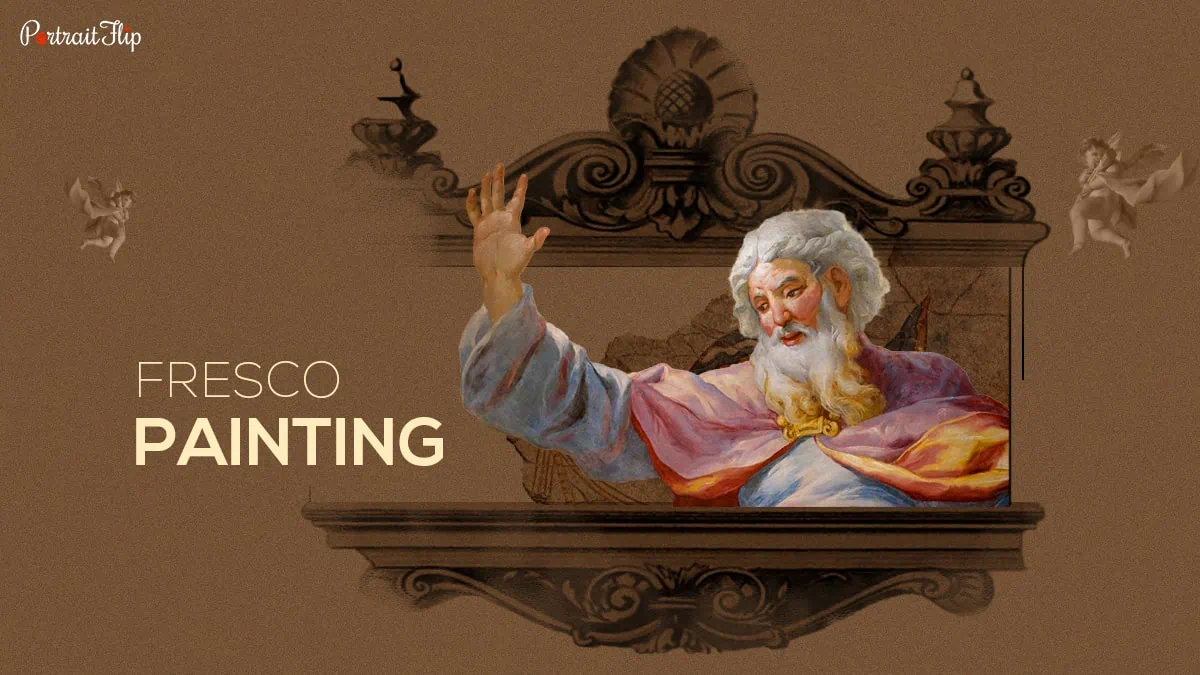Here’s an ultimate guide to fresco painting, which evolved significantly with time and influenced geniuses like Michelangelo, Raphael, and Leonardo da Vinci.
Look at some magnificent fresco paintings by these Renaissance artists.

The Last Judgement, The Last Supper, The School of Athens, and others, which were made with the utmost care and affection, were actually the heirlooms of prominent families and art patrons at that point.
Art patrons, who belonged to merchant and wealthy families, would offer commissions, and artists, on the other hand, would accept them, perhaps to sustain themselves.
However, the point is not that of who took the first fresco commissioned art; the point is whether fresco paintings belong to the 14th century; the point is what drove artists like Michelangelo, Raphael, and Leonardo da Vinci to produce fresco paintings.
And this list goes on and on…
In order to learn the relevancy of fresco in the Renaissance era, you must know its existence, its types, and why art patrons relied on Renaissance artists to produce fresco paintings.
Here we present a detailed blog on fresco paintings, taking you back in past, in ancient times, when frescos were made for different purposes.
Let’s see what had happened in the past during imperialist rule.
Table of contents
What is a Fresco Painting?
First things first, what exactly is fresco painting?
Are murals and frescos the same? Because oftentimes we’ve heard the mural and fresco being used interchangeably.
Well, fresco is actually a type of mural art, mainly created on walls and ceilings.
How Was Fresco Painting Created?
The creation process of fresco art involved the collective use of earthy pigments and water on a freshly plastered wall.
There were mainly three types of fresco, Buon and Secco, which were prominent in ancient times, with the Mezzo fresco being relevant in the medieval period, i.e., the Renaissance era.
But how did an art form that had roots some 2500 years ago become a massive success in the Renaissance?
How Did Frescoes Become a Popular Art Form in Renaissance?

Associated with large murals, fresco was the most sought-after art form in the Renaissance era.
There was a massive flow of money all across Europe, with the wealthy classes being involved in art with the purpose of having their houses and churches adorned by large art pieces.
They’d commission fresh talents and get their properties beautified with murals and frescoes.
Due to experimentation, a new form of fresco was created, which was repeatedly used through the Renaissance era.
Below we will mention the events that brought fresco art closer to its success.
(Also Read: 24 Renaissance Facts)
Types of Fresco
There are mainly three types of fresco style paintings that have emerged over the years.
Each technique has its role in adding depth, intensity, and vibrancy to the fresco art, which cemented their spots at different points in time.
A. Buon Fresco

Buon fresco is the oldest technique that offers a limited drying time.
Fresco art made using the Buon technique is quite challenging and requires impeccable skills and understanding.
It’s a three way process, with the first step involving preparing a layer plastered onto the wall—which is supposed to be solid, hard, and immovable.
The second step involves the artist being impeccable with its composition, and the third revolves around how quickly the artist creates and pricks his composition over the walls where he wants to display his fresco.
(Also Read: World’s 15 Stolen Artworks)
B. Secco Fresco
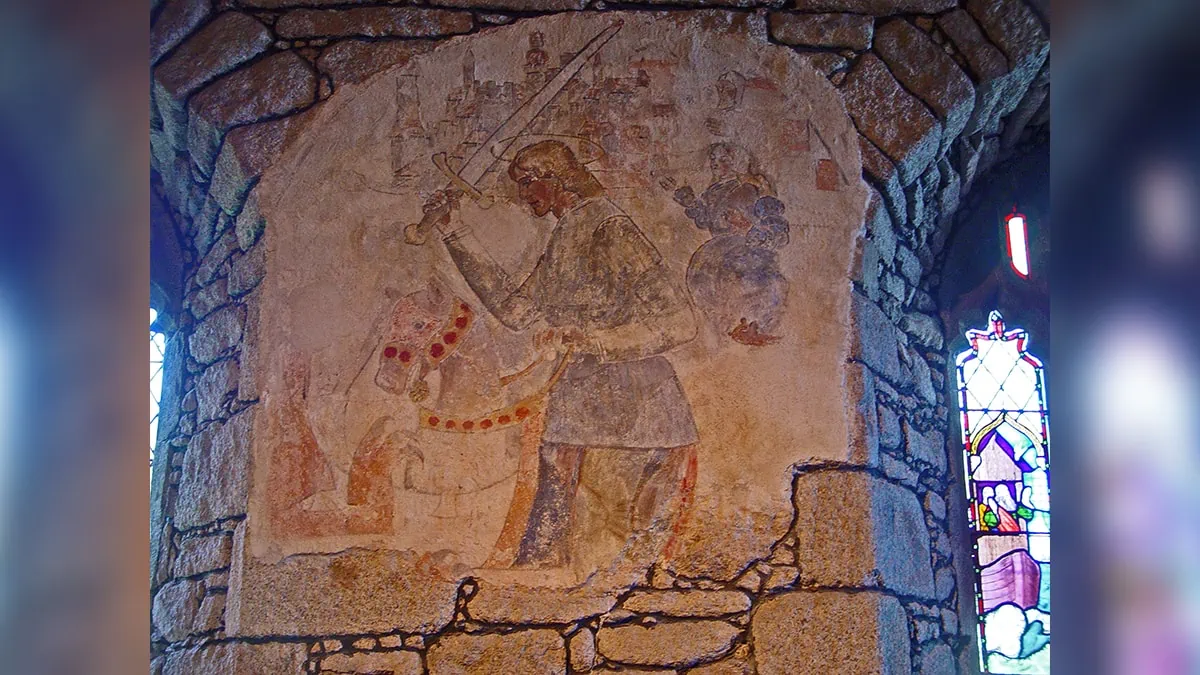
Popularly used by famous painters Michelangelo and Raphael, secco fresco is comparatively less difficult than buon fresco.
Unlike Buon, you can erase or work on your mistakes, keeping the art’s vibrancy and captivating elements at their best.
It doesn’t demand a plain or smooth surface; you can create secco fresco painting on a roughed patch as well with pigments whichever you want.
Most traditional painters would use this technique of fresco to add an extra layer to Buon fresco.
C. Mezzo Fresco
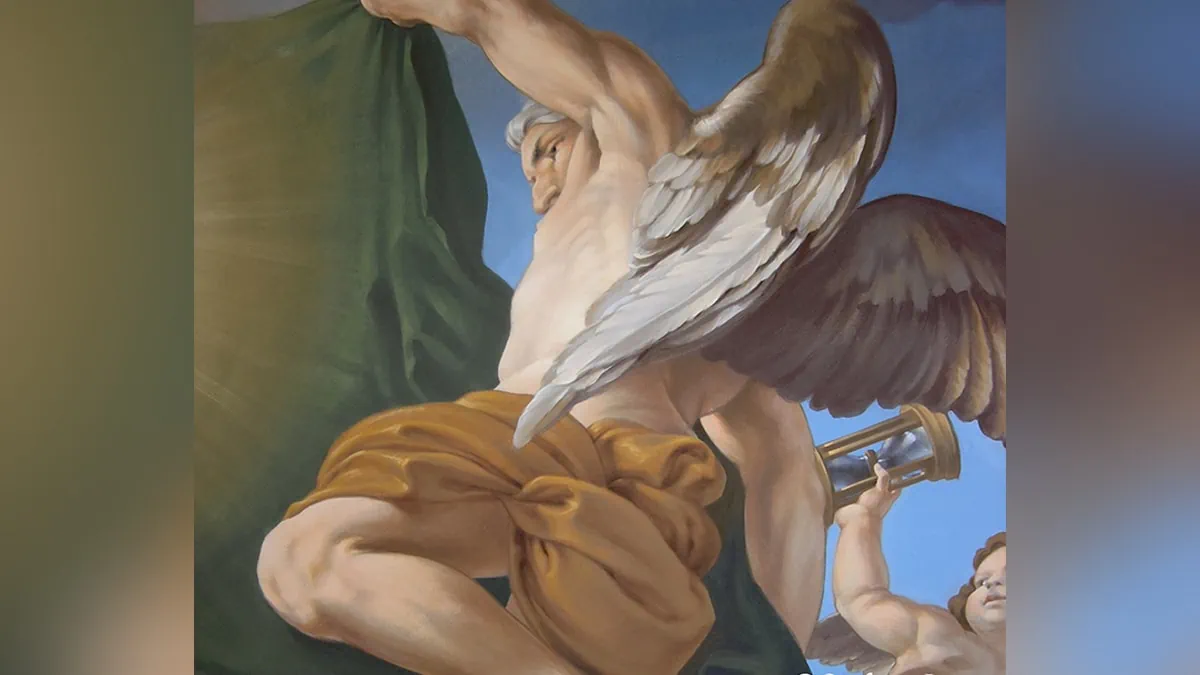
The last form of fresco painting is mezzo, which is a combination of Buon and Secco frescos.
Artists would apply paint to a slightly dry surface so that pigments get absorbed with the plaster, leaving the effects of what Buon and Secco do.
The other two techniques of fresco were used in antiquity and secco, also being prominent in pre and post-Renaissance eras.
However, it was Mezzo that born and flourished in the Italian Renaissance and intrigued the masses, including prominent painters from the Baroque.
It was significantly used to produce large wall paintings, including landscape art, as it allowed artists enough time to work on their compositions.
Although mezzo frescos gained popularity in the Renaissance, they had almost replaced the Buon technique by the beginning of the 17th century.
Brief History of Fresco
The affection, fame, and popularity bestowed upon fresco art were immeasurable.
Especially when the Renaissance was flourishing in Europe, with minds like Michelangelo, Raphael, and others leading the movement from the front.
However, it has existed for the last 2500 years and has remained a prominent art form all over the world.
From Egypt to Israel, from China to India, fresco art has been a pertinent part of every corner of the world.
The Renaissance was the time when frescoes were made to deliver religious messages to the masses and, of course, to adorn walls and ceilings.
But if we take a look back to the first or earliest fresco example, we could say that it was made to adorn walls of tombs and palaces.
Also, locals would make frescoes to bring some charm to their house, which was an alternative to luxurious decorative items.
The date remains unknown as when was the first fresco made, but some sources say that the earliest frescos were found in the Hierakonpolis tomb in Egypt date back to between 3500 and 3200 BCE
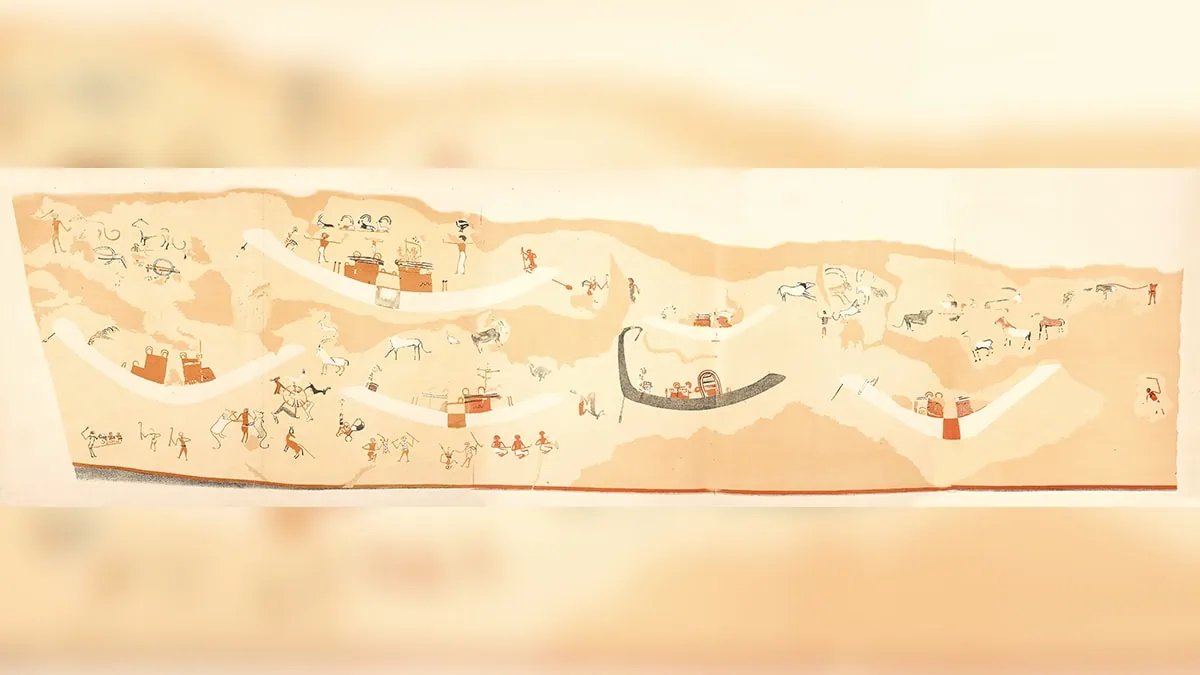
Other frescoes were found in Israel, Egypt, and Crete dating back to 2000 BCE, whereas in China during the Han Dynasty and in India during the Mauryan period, on the Asia continent.
As we already know, Buon fresco came into existence first, but it was first found in the first half of 2000 BC.
Thousands of fresco paintings were made in classical antiquity, but only a few are left, and unfortunately, they are in shabby condition.
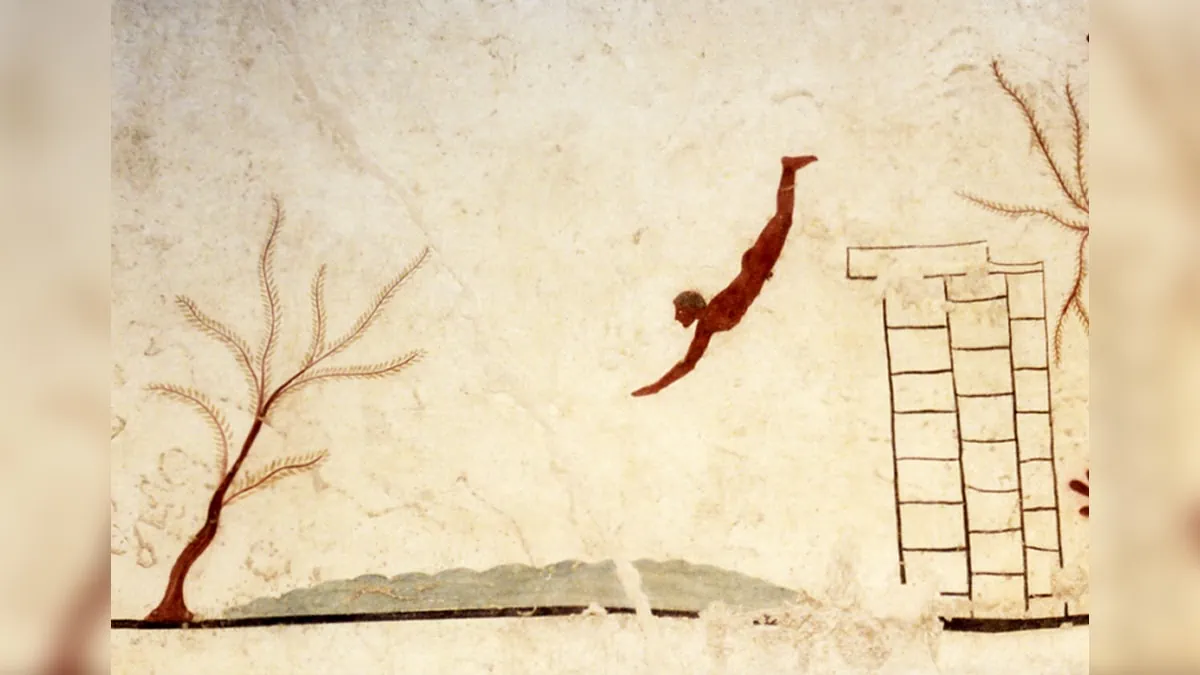
The Tomb of the Diver, being the most ancient fresco art with religious elements, remained an inspiration for medieval and contemporary artists.
Greece and Rome always appear first when we speak about fresco, but this famous mural type has also been seen in several parts of Sri Lanka and India.
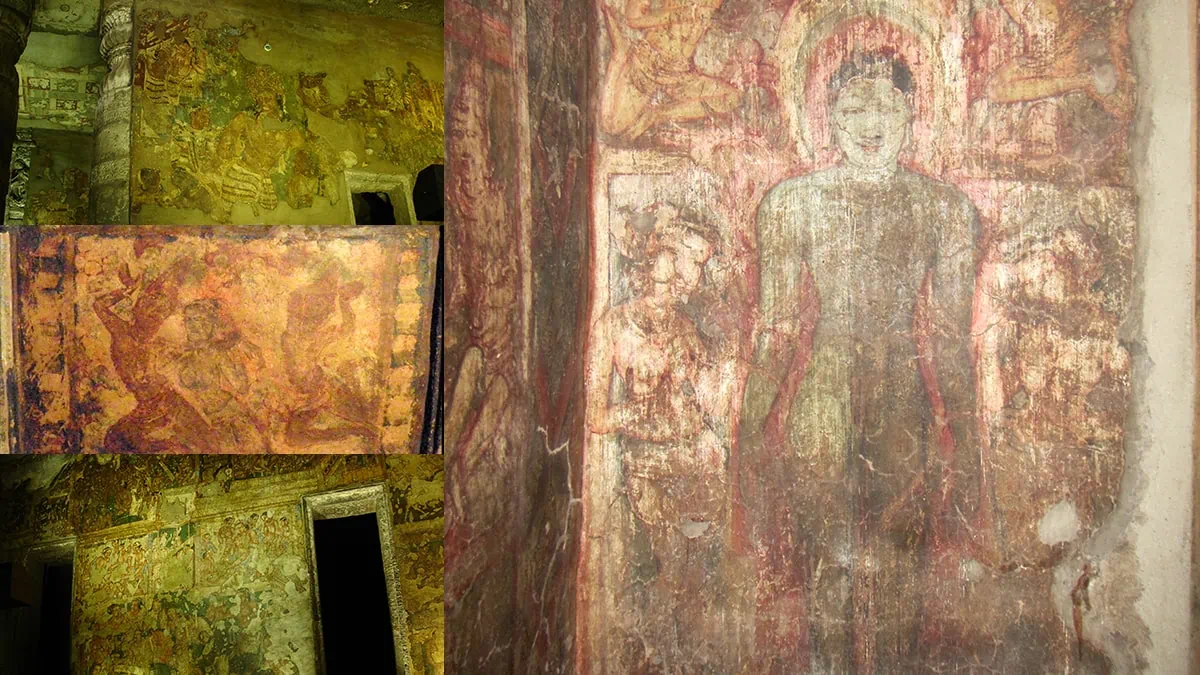
From Ajanta to Ellora caves, influenced by Buddhist and Jainism philosophy, fresco was made in abundance—which is descriptively mentioned in Indian art.
In Sri Lanka, the Sigiriya frescos date to the reign of King Kashyapa around 500 CE.
Fresco painting, being a prominent part of different Imperialist rule, went through several transitions, especially in the 14th century, when European art primarily relied on it to spread its ancient culture and values.
That’s how the era of fresco painting began in Europe in the 14th century. Let’s learn what made European embrace this 1500 year old, and produce tons of world-class mural art
Fresco Paintings in Renaissance and Modern World
Fresco painting was at its peak during the Renaissance because Italian painters were keen on experimenting with this type of mural art.
This resulted in the creation of Mezzo fresco art, which cemented its spot and attracted many Renaissance artists.
The good part is that most Fresco artwork made during this period has remained as it is.
Cultural depictions remained its core theme; Jesus was painted several times on several fresco paintings, and the scenes from the Bible were demonstrated on many mural types of art.
Architectural values increased as fresco artists received loads of commissioned works.
The early Renaissance produced stunning frescos like Giotto di Bondone Scrovegni Chapel, 1305, and Dominican Friary of San Marco, 1428, and it was Michelangelo’s Sistine Chapel Ceiling that left everyone in awe.
The representation was on point, covering the concepts of hell and heaven and featuring over 300 figures from scripture.
Although it was extremely difficult to represent an accurate depiction of 300 figures, he scraped away some of the wet plaster around their bodies and created lighter yet more visible outlines.
Therefore, they looked so detailed and captivating in the fresco art.
As time went on, the demand for fresco painting plummeted with the rise of oil paintings and in later years, wooden panels and stretched canvas panels.
Final Note
The Italian Renaissance revived fresco painting.
Thanks to those who did their part in making fresco the mainstream art form from the 14th century to the 17th century.
However, fresco painting began losing its grip, perhaps due to the transition the European art world was witnessing with the emergence of new techniques, styles, and values.
In the late nineteenth century and early twentieth century, fresco painting underwent a revival in Britain, with murals seen as a popular approach to adorning public buildings.
Although it wasn’t close to what Renaissance artists did, it still evolved, which was appropriately aesthetic at that point.
However, the number of fresco paintings remained low, with some being made on the walls of the Scottish National Portrait Gallery, Mansfield Place Church in Edinburgh, and others.
While fresco never reestablished its position, many artists, especially Mexican painters, sought their inspiration in frescos from ancient and medieval times.
It even helped the Mexican mural movement flourished, which was led by José Clemente Orozco, Diego Rivera, and David Alfaro Siqueiros.
With that being said, fresco became more complex, diverse, and narrative, but it cemented a little yet important spot in the contemporary art world.
Frequently Asked Questions
Fresco art was created to add a statement to churches and houses of the rich and to spread biblical values and teachings to the illiterate in society.
Buon, Secco, and Mezzo were the three types of fresco paintings.
Secco fresco allows artists to paint on a dry wall.
Oil paintings played a major role in replacing fresco art forms.



